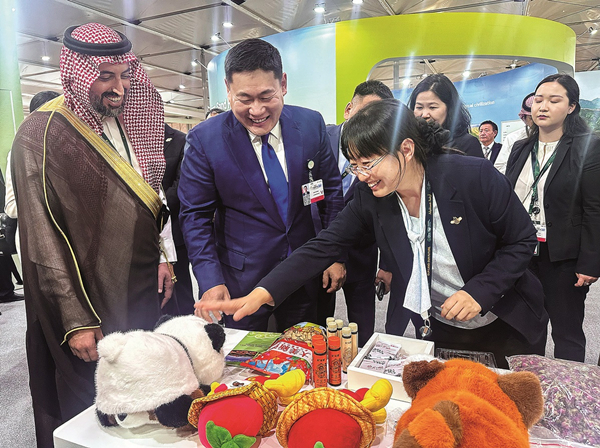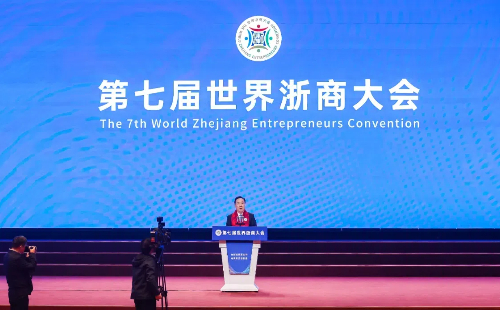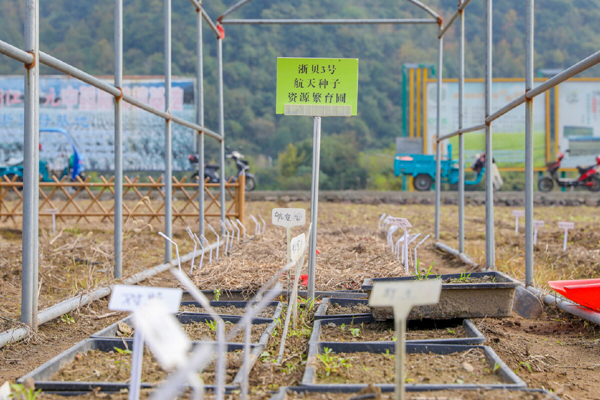China lauded for combating desertification

Mongolian Prime Minister Luvsannamsrai Oyun-Erdene (second from left) visits the China Pavilion during COP 16 in Riyadh, Saudi Arabia, on Monday. YAN DONGJIE/CHINA DAILY
China has made significant scientific advancements in combating desertification while achieving substantial economic benefits at the same time, and these experiences are worth sharing with the world, foreign experts said.
They made the remarks after visiting the China Pavilion that opened on Monday at the venue for the 16th Session of the Conference of the Parties of the United Nations Convention to Combat Desertification in Riyadh, Saudi Arabia.
"Scientists in China have taken on issues that in the past seemed to be very difficult to solve," said Barron Joseph Orr, chief scientist of the UNCCD.
For example, the country has not only implemented new technologies to reduce soil erosion, it is making dedicated efforts to share these methods with the world, Orr added.
In methods such as soil implementation that can reduce erosion, he said, "China is very strong in this regard in terms of how that's applicable elsewhere. Those techniques are transferable, and there's a very big effort in China to get it out to the world."
The China Pavilion is showcasing the country's history and achievements in sand control, including the Three-North Shelterbelt Forest Program. An exhibit of the program, which has built a "green Great Wall" in 13 provincial-level regions in northern China, opened on Monday at the COP 16 gathering.
China's efforts in combating desertification date back over 50 years. According to the National Forestry and Grassland Administration, 53 percent of China's treatable desertified land has been managed. By the end of last year, China's forest coverage rate exceeded 25 percent.
China joined the UNCCD in 1994 as one of its first signatories, and has been honored twice by the organization for its "outstanding contribution to combating desertification".
Chinese people have developed various methods to fight desertification — including creating the straw checkboard barrier-fixing sand dune, conducting aerial seeding and closing sandy areas for revegetation — overcoming technical challenges in the restoration of forests and grass coverage in arid and semiarid areas and significantly improving plants' survival rates, said Guan Zhiou, head of the Chinese delegation to the COP16 and director of the National Forestry and Grassland Administration.
"In recent years, mechanized and intelligent technologies such as sand fixation machinery, data monitoring and drone seeding have been widely adopted," he said.
These technologies and methods are also being showcased at the China Pavilion. Other exhibits include information about China's ecological civilization concept, typical character stories related to the history of desert control, and crops such as sea buckthorn and goji berries, which bring benefits to the people in desertified areas.
Mongolian Prime Minister Luvsannamsrai Oyun-Erdene toured the China Pavilion on Monday and said he was impressed by the new technologies displayed, including some AI-related land monitoring devices and data analysis equipment.
Jia Xiaoxia, deputy director of the National Forestry and Grassland Administration's Department of Desertification Control, guided Oyun-Erdene during the visit.
"There has been a lot of cooperation with neighboring countries — including Mongolia — in sand control, and we'd love to share our new technology experience in the future," Jia said.
Orr, the UNCCD official, said that he feels the Chinese scientific community's eagerness to engage.
"We need far more scientists that are able to bridge society, science, policy and practice," he said.
When talking about challenges such as understanding wind erosion and how it contributes to sand and dust storms, as well as issues such as modeling and projecting datasets and the ability to integrate economic and biophysical data, Orr said that "China has been central to these kinds of analyses, and that's been very positive to the global agenda on addressing land degradation, drought and desertification."
Andrea Meza Murillo, deputy executive-secretary of the UNCCD, said she was impressed with China's experience in the combination of sand control efforts and economic outcomes, as well as green energy.
In the Three-North Shelterbelt Forest Program, regions use the unique resources of sandy areas to develop industries such as traditional Chinese medicinal herbs, high-quality forage grass, economic orchards and desert tourism to support poverty alleviation efforts and rural vitalization, according to the National Forestry and Grassland Administration.
"So the China model is really showing that you can have development with these green ways," she said.
Chinese Ambassador to Saudi Arabia Chang Hua said that in recent years, China has collaborated with the Middle Eastern country on projects such as solar energy and new energy vehicles, continuously exchanging experiences to prevent desertification.
He said that near Saudi Arabia's Jeddah, one of the largest solar power plants in the Middle East is being built by a Chinese company. Chinese renewable energy companies, especially those specializing in solar power generation, are highly popular in Saudi Arabia as well.
Nathan Williams in Riyadh and Shi Yudie in Beijing contributed to this story.
yandongjie@chinadaily.com.cn

 Multitalented slashie bridges music and academia in Ningbo
Multitalented slashie bridges music and academia in Ningbo  French traveler experiences Ningbo's winter fishing feast
French traveler experiences Ningbo's winter fishing feast  A look at China's economic data in October
A look at China's economic data in October 


